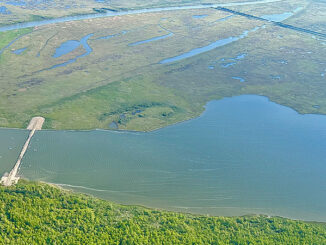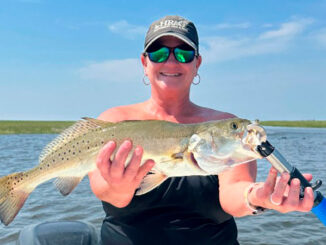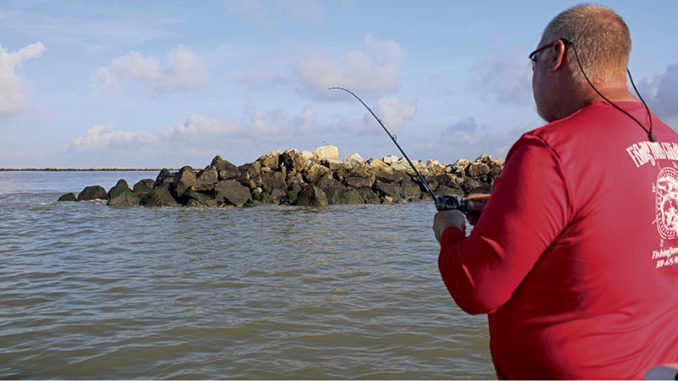
Wintertime coastal fishing in Louisiana can yield some of the greatest redfish action Louisiana has to offer. And you can expect to land speckled trout and more as well.
For anglers sight fishing in the marsh on an outgoing tide in the clear winter water or fishing the jetties, there is a sound all saltwater anglers love to hear. The “ziiiiinnnggg” of line being stripped from the reel is a sound that excites any saltwater angler.
The effort put into chasing these coastal fish is compounded in the winter with what is often a very uncomfortable and chilling boat ride; however, the bite is worth the ride. A quote I have heard since a child is “40 degrees in the morning is not 40 degrees at 45 miles per hour in an open boat.” It “feels like” about 25!
The wintertime pursuit of saltwater fish within the Calcasieu Estuary can produce a variety of species of fish. Methods among anglers may vary as well as the targeted species. The winter months tend to be productive for redfish, speckled trout, black drum, and flounder; however, it can lead anglers to any saltwater species. It is important to be aware of all Louisiana Department of Wildlife and Fisheries regulations in your area as there are currently some new regulations regarding redfish and potentially speckled trout that may go into effect soon. The fall months also have a closed season for flounder.
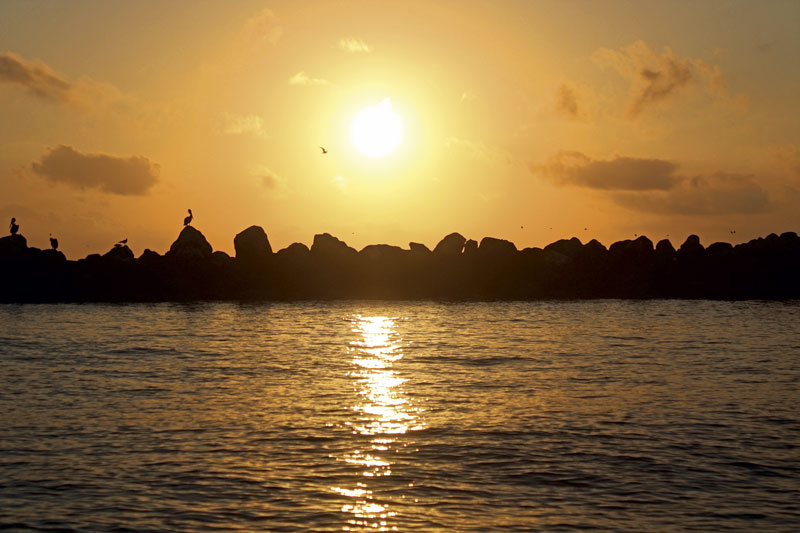
Capt. Thomas Adams has been fishing Calcasieu Lake for over 30 years and has a tremendous amount of experience fishing the entire Calcasieu estuary in all climates and pursuing all species of saltwater fish. I met Adams in the early morning hours in Hackberry to spend a day following the typical winter routine for Calcasieu Lake. We were joined by Capt. Dominique Duplechin, a seasoned guide who works with Adams.
Adams gave a quick check of the gear, a short safety brief, and it was time to get moving. We ran south on the Ship Channel as the sun was just beginning to peak over the horizon. At the south end of the Ship Channel is the famous Calcasieu Jetties areea leading to the open Gulf of Mexico.
All species
The jetties can produce virtually all species of inshore or nearshore saltwater fish. With his years of experience, Adams looks for specific locations that provide both tide movement and bait fish. Beneath the water, the edges of the rock jetties have submerged points and anomalies that provide good ambush points with moving water. The water was a bit murky, and conditions were not ideal; however, muddy water never seems to ruin the bite.
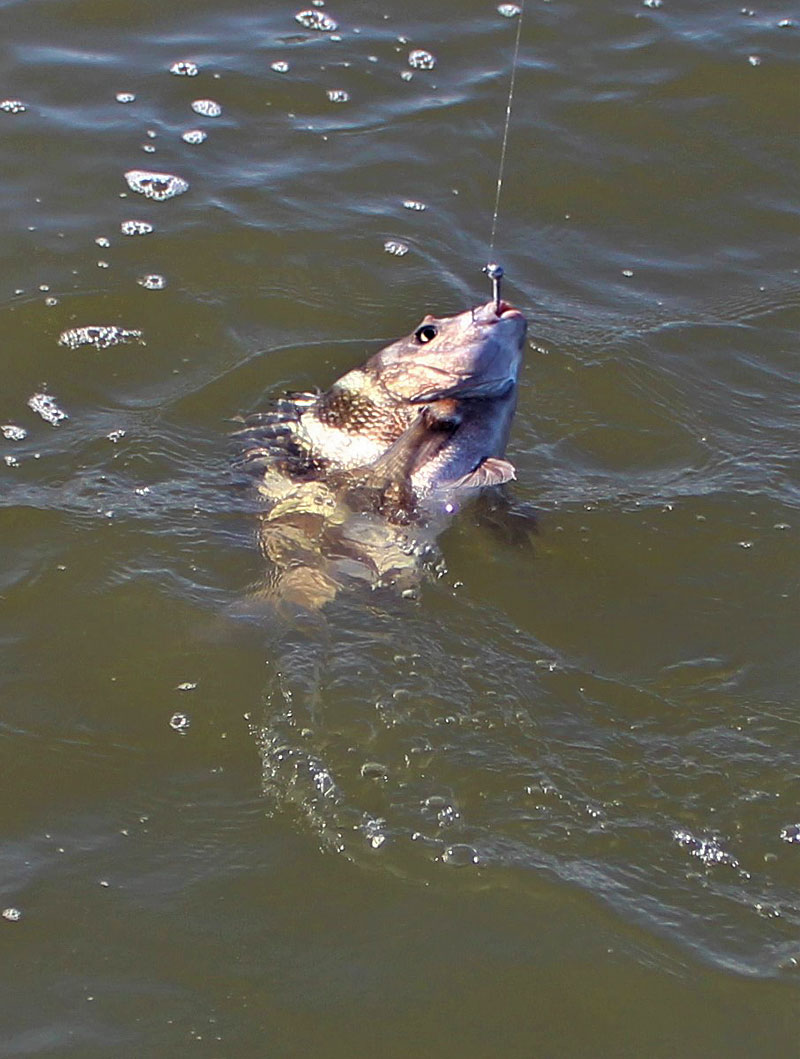
The rig of choice was a combination of shrimp on a 1/8 or ¼-ounce jig head fishing the bottom as well as using shrimp under a popping cork. The popping cork rig is an all-time favorite for Louisiana saltwater anglers and is a trusted method. In the same area anglers will also often use a Carolina rig. Duplechin would cast against the rocks, allowing the tide to give movement, with an occasional popping action. Beginning in the morning, Adams carefully tossed the shrimp on a jig head near the rocks and let it fall. As the bait falls along the rocks, it is in the strike zone of a variety of species that include sheepshead, black drum and red drum. The redfish and black drum typically reside near the bottom, but occasionally the bait may be picked up by sheepshead before it falls to the desired depth.
Very quickly, Adams hooked into a fish with a sharp bend in his rod. A midsize black drum was netted as the first fish of the day. Likely one of the most underrated saltwater species of fish, the black drum is excellent eating. Just a few cast’s later he hooked into his first sheepshead of the day. Also an often-overlooked fish for table fare, the sheepshead is a great fighter with a mouth full of crushing teeth that new anglers always find fascinating.
Finding the reds
Over the next hour we moved to various locations around the jetties looking for the bite Adams was after. Occasionally catching more sheepshead and a few black drum. Finally, the sound we had been waiting for. A sharp strong hit bending the rod and hearing the drag singing a favorite tune all those who chase redfish love. After a short fight, Adams boated the first redfish of the day. The bite was, however, a bit slow and a decision was made to move.
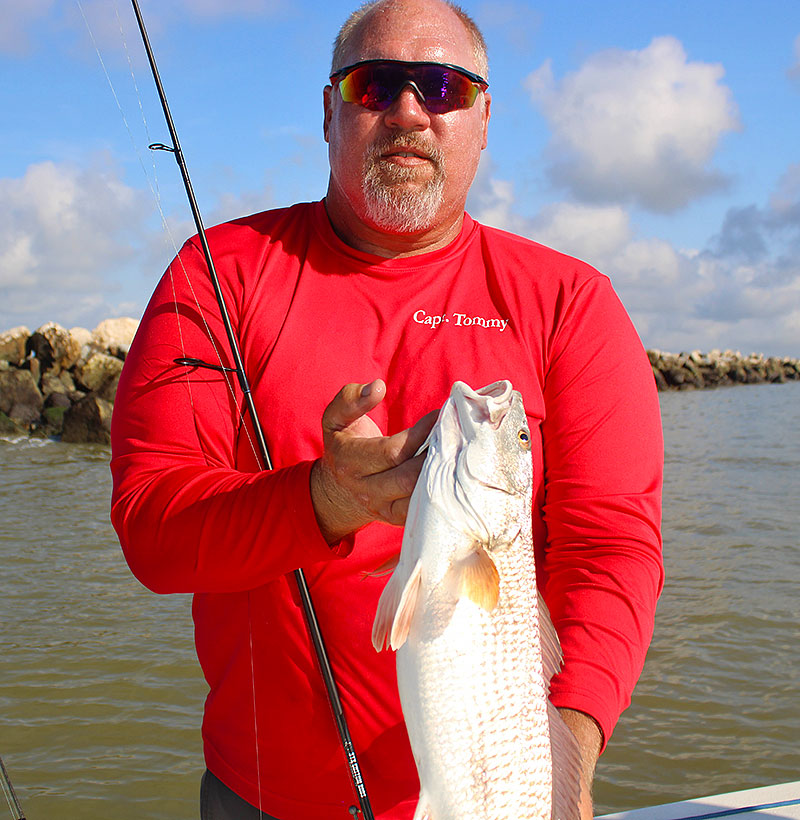
Going through the channel and into the east cut going north we ran through what could really be the definition of coastal South Louisiana and its communities: shrimp boats at dock, butterfly net barges tied up and the vast beautiful marshes that cover the coast. The Calcasieu estuary begins in the city of Lake Charles and runs nearly 32 miles to the open water of the Gulf of Mexico. Calcasieu Lake proper is roughly 16 miles long and 6.2 miles wide at its widest point. Our run north and then east took us to the weir structures on the southeast side of the lake that control saltwater intrusion into the marsh as part of the Sabine National Wildlife Refuge. There are several water control structures along the lake, but we targeted Grand and Lambert Bayou areas.
The water moving through the water control structure is the result of the tidal influence. Having the tide movement confined to a small area can increase the water movement and therefore bait fish and bait species tend to congregate in the small area. The same two techniques were used with shrimp on a jig head to try to reach the bottom in a hopeful interaction with a hard pulling redfish or black drum. It is important that anglers learn techniques and methods to target the species they desire and develop the ability to adapt to a unique situation first-hand. Often redfish may prefer crabs over shrimp.
Crab time
Duplechin noticed a couple crabs just beneath the surface on the rocks under the bow of the boat. In short order and in a unique display of teamwork, I witnessed Adams work the movement of the boat very close to the rocks while Duplechin grabbed a net and a rod with a piece of shrimp. Amid the moving boat, the tide, wind, and a small amount of chaos, Duplechin was able to net a crab. With fresh crab in hand, an adapted plan was put into action. The crab is broken in half and one half of the crab is used with the 1/8-ounce jig for fishing along the bottom. Unfortunately, the result was a small back drum and the bait ran out quickly.
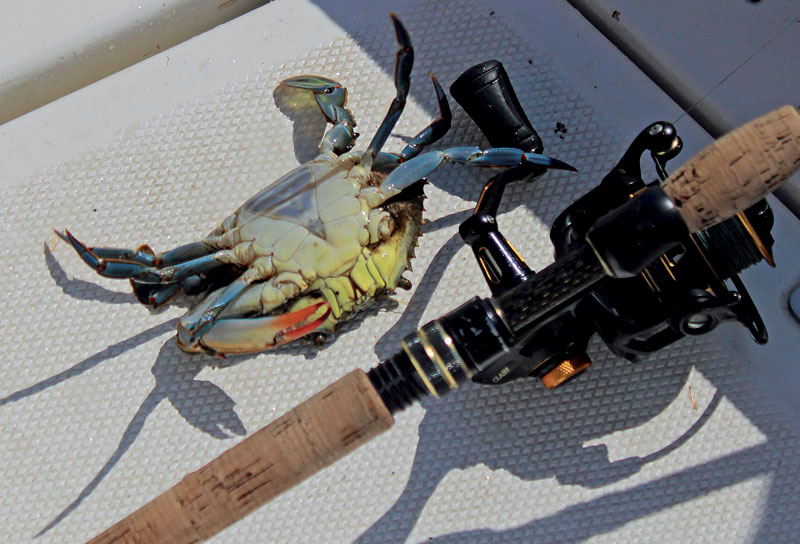
Adams once again put us on the move to see if we could perhaps pick up a few trout. The technique did not differ much from the summer months as we moved to fish one of the man-made reefs in the south end of the lake. Shrimp under a popping cork and artificial swim jigs were the method of chase. In pretty short order there were trout coming over the side of the boat.
Adams will cover a lot of water in the pursuit of fish on any given day. The case for winter fish may run from the jetties at the mouth of the Calcasieu River, north to along the rocks that are along the ship channel, Black Bayou, Joe’s Cove, or even further north to Moss or Prien Lake. The day ended with a decent mess of fish, lots of laughter, shared stories, and new friends.
Unique challenge
Winter fishing across South Louisiana has a unique challenge that is often overlooked — the interaction between fishermen and duck hunters trying to use the same water. Adams has had experience with the issue in portions of the west side of Calcasieu Lake on the borders of West Cove, Joe’s Cove, and the bayou’s that feed into the Calcasieu Ship Channel. Adams has never had any issues with duck hunters and most appear to be happy to share the outdoors. He makes it a point not to fish near a hunter’s decoys or do something to interrupt their hunt. The best option is relatively simple. Give everyone the space to enjoy the outdoors, give them space to fish or hunt, pass them safely and do not do anything to antagonize or harass. Anglers and hunters often frequent the same areas this time of year.
Stay up to date on regulations, get out on the water, enjoy the chase, and hopefully you will hear the angler’s favorite salter song of the Louisiana redfish pulling drag — “ziiiiinnnggg!”
